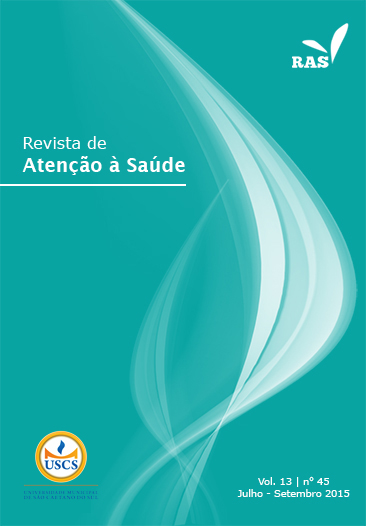ANALYSIS OF RESTING HEART RATE RECORDED BEFORE A MAXIMAL EXERCISE TEST
DOI:
https://doi.org/10.13037/ras.vol13n45.2958Keywords:
Heart rate, exercise, autonomic nervous system.Abstract
This study aimed to verify the validity of the value for resting heart rate (RHR) recorded immediately beforea maximal exercise test. For convenience, 23 university women (21.8±2.8 years, 57.9±10.2 kg, 163.6±5.5cm) healthy and with previous experience in this test were enrolled. All subjects performed randomly twovisits to the laboratory, one only to record the RHR and another followed to a test of maximal effort,using the treadmill Bruce protocol. It was applied the Student t-test for paired data with significance levelof p<0.05. The results showed significant differences in RHR values between the control day (68.2±7.5bpm) and pretest day (71.9±7.8 bpm) (p=0.003) with an average increase of 4 bpm, ranging from -7 to17 bpm. Then, we conclude that the values of RHR unchanged when recorded before a maximal exercisetest in young university women students.Downloads
Downloads
Published
2015-09-29
Issue
Section
ARTIGOS ORIGINAIS
License
Policy Proposal for Journals offering Free Delayed Access
Authors who publish in this magazine agree to the following terms:
- Authors maintain the copyright and grant the journal the right to the first publication, with the work simultaneously licensed under a Creative Commons Attribution License after publication, allowing the sharing of the work with recognition of the authorship of the work and initial publication in this journal.
- Authors are authorized to assume additional contracts separately, for non-exclusive distribution of the version of the work published in this magazine (eg, publishing in institutional repository or as a book chapter), with the acknowledgment of the authorship and initial publication in this journal.
- Authors are allowed and encouraged to publish and distribute their work online (eg in institutional repositories or on their personal page) at any point before or during the editorial process, as this can generate productive changes, as well as increase impact and citation of the published work (See The Effect of Open Access).









